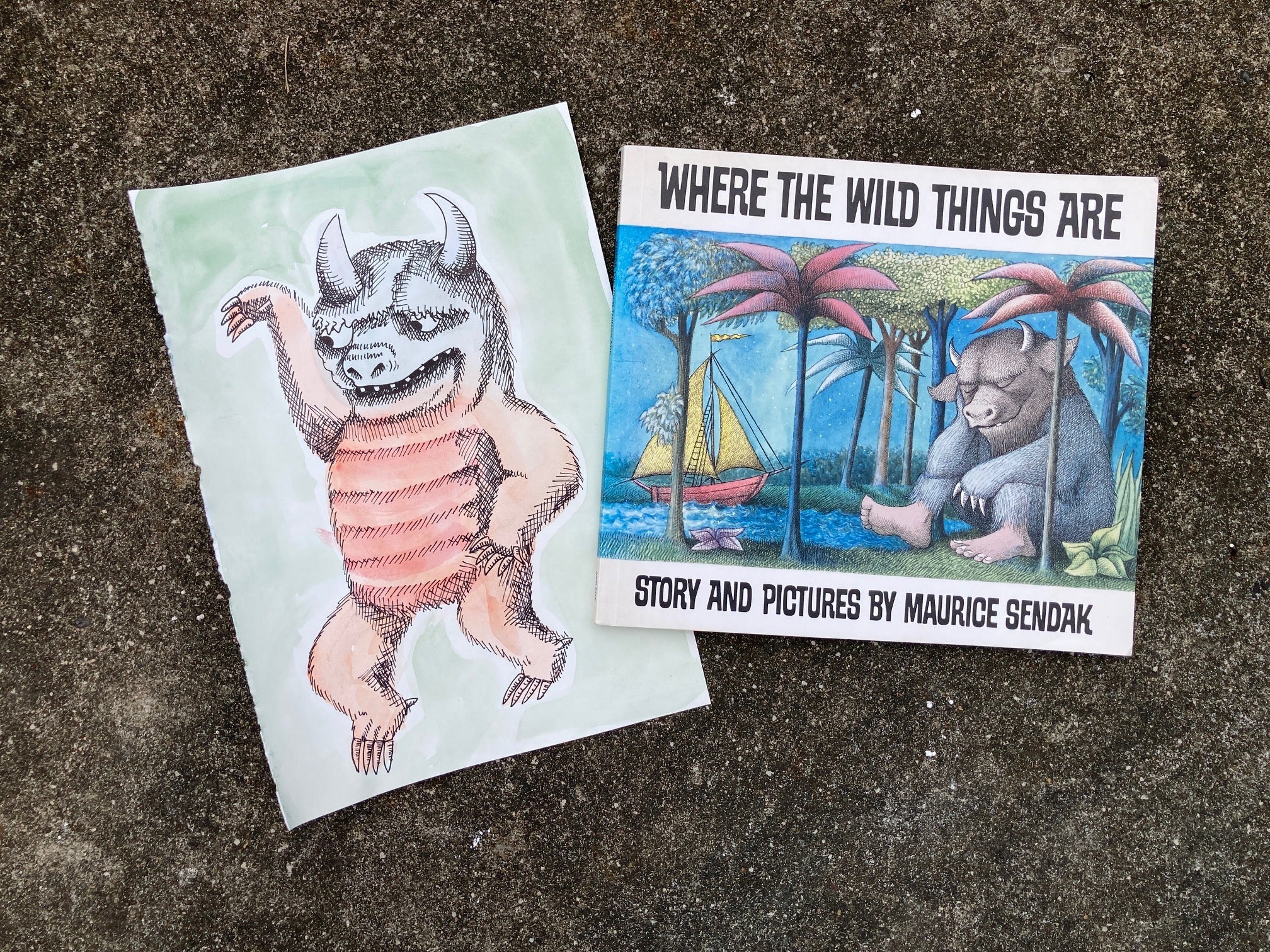
Where the Wild Things Are
Today I am tackling the classic book Where The Wild Things Are by Maurice Sendak. The illustrations in this book are some of my favourites, they express texture and mood so well. Those hairy and beady-eyed wild things are great for sparking the imagination of kids. So I am going to lay out a few ways your kids can create an artwork like Sendak using just white card, black pens, and either watercolours or felt tip pens.
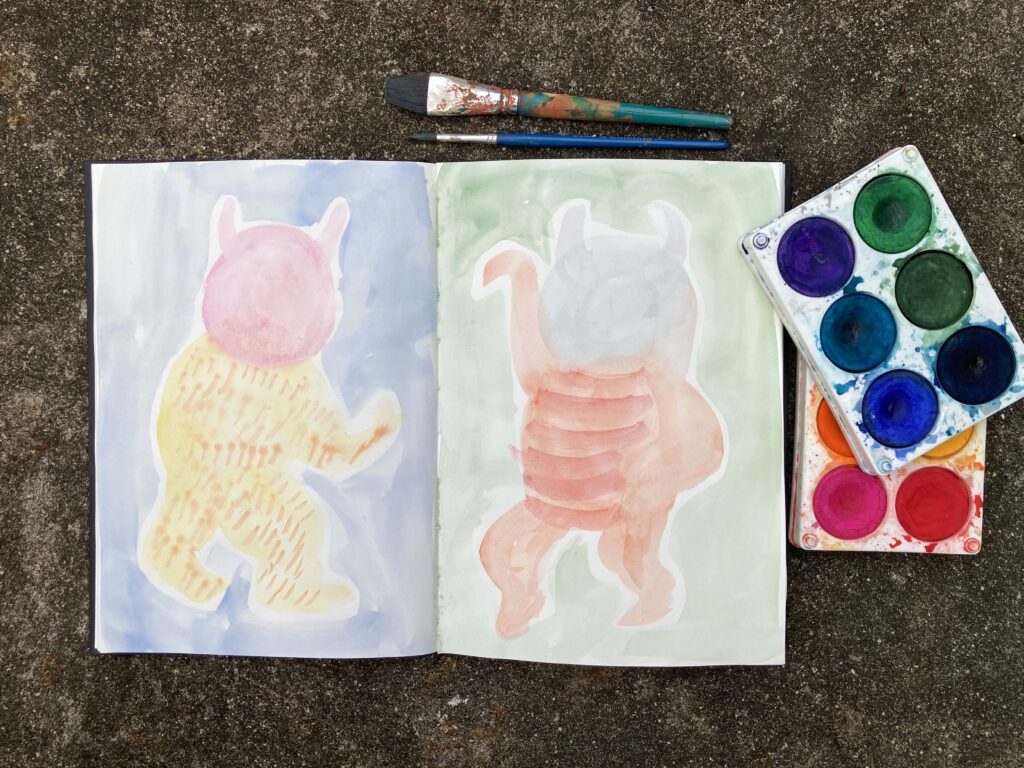

Firstly, the artwork needs a gentle layer of colour, the colours in Sendak’s pictures are pretty washed out and muted behind those black lines. I tried very watered-down watercolours on one hand, and on the other hand I used washable markers which I washed over with a wet brush so the ink ran. Both effects work, just depends on what you and the kids have lying around, though check your markers are washable and that the ink runs before committing to the technique.
When sketching in the Wild Thing shape with the colours, I recommend googling some images of the Wild Things with your kids to get an idea of body shapes, arm and leg directions. Don’t worry about fine detail at this point, and mistakes can be drawn over later. Pinks, browns, reds, greys, oranges and yellows work best for the bodies, and I filled the background with blue or green to give a sense of environment.
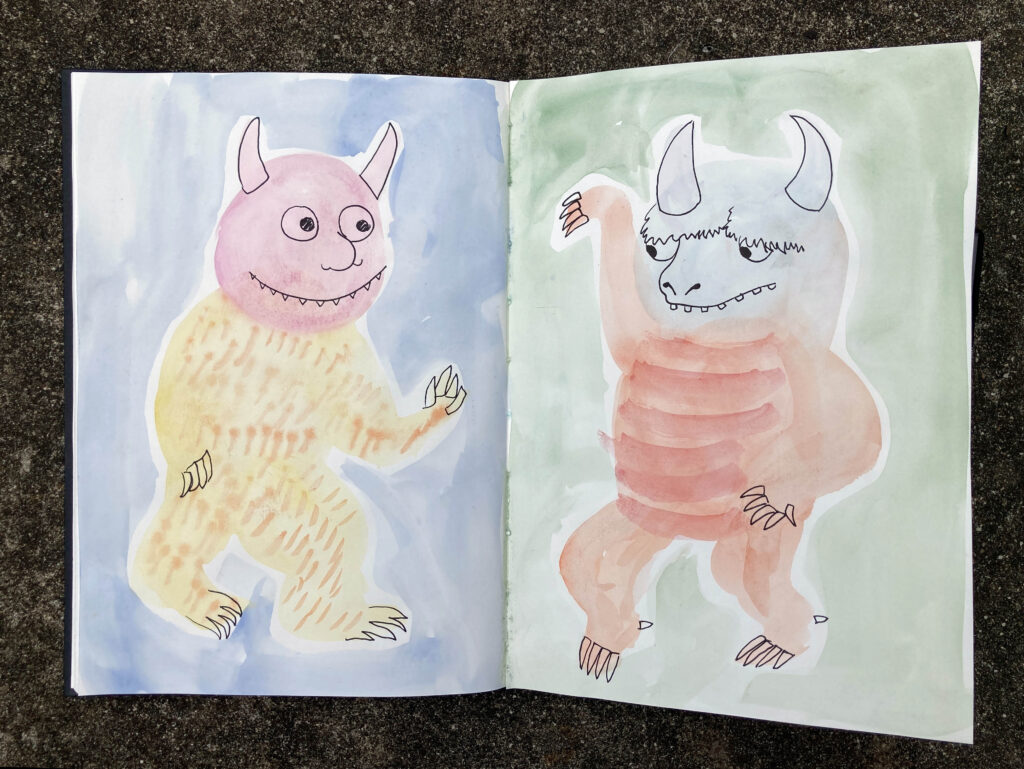

Once this is dry talk with your kids about some of the important details to sketch in first: eyes, horns, teeth, claws and toes. Plotting these in now will help the kids get a sense of how the Wild Things will develop on the page.
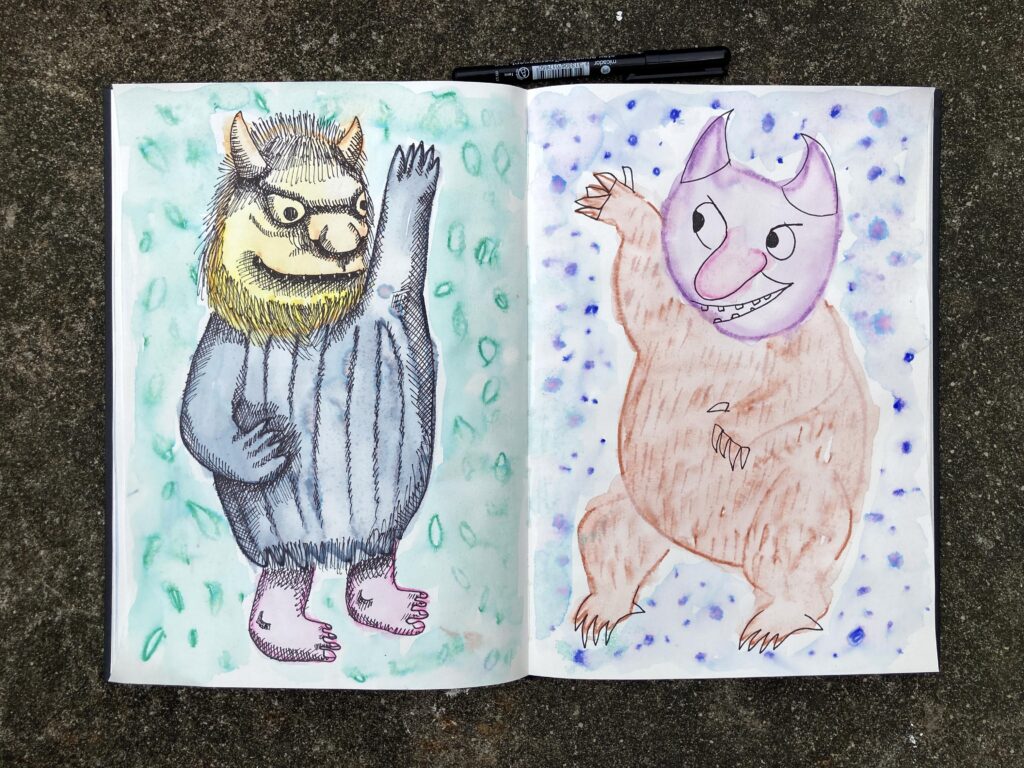

Now talk about cross hatching, the primary technique of Sendak’s illustrations. Cross hatching is closely drawn and overlapping lines, the density of which determines how much light or shade appears to be on your character. So wherever the Wild Things would have shadows on their bodies that’s where you have to build up plenty of crosshatching. This type of shading/texturing does not have to be super neat, it can be quick and rough for the most part. Try doing wavy crosshatching if you want your Wild Thing to look like it has wavy hair. Having Sendak’s illustrations up in front of you will make a huge difference for your kids while they work on this piece, and they will learn a lot about light, texture, and form by continuing to return to the drawings.
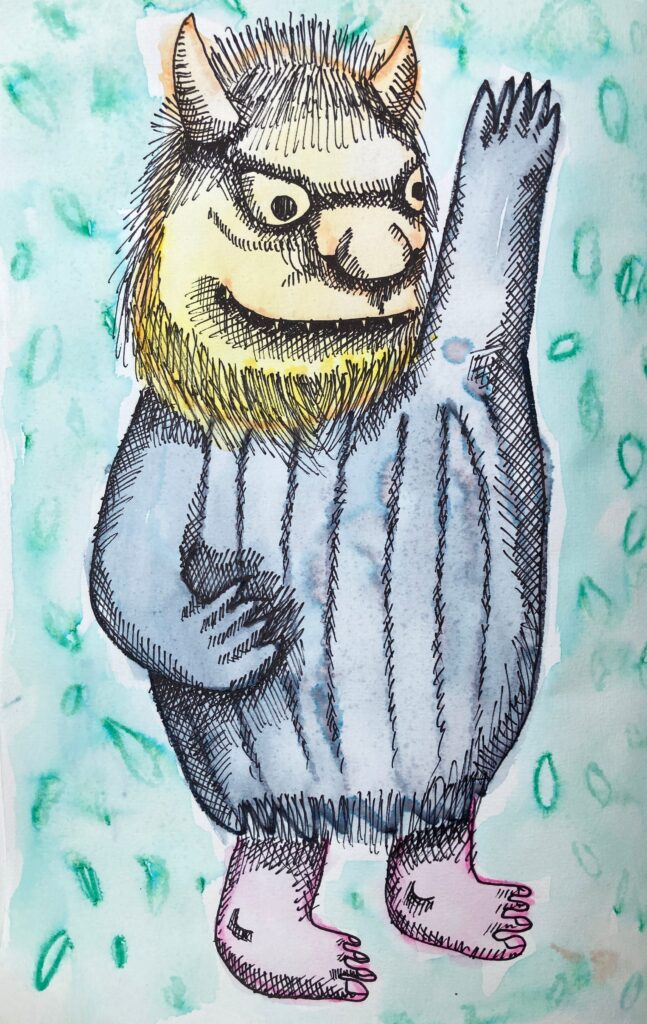
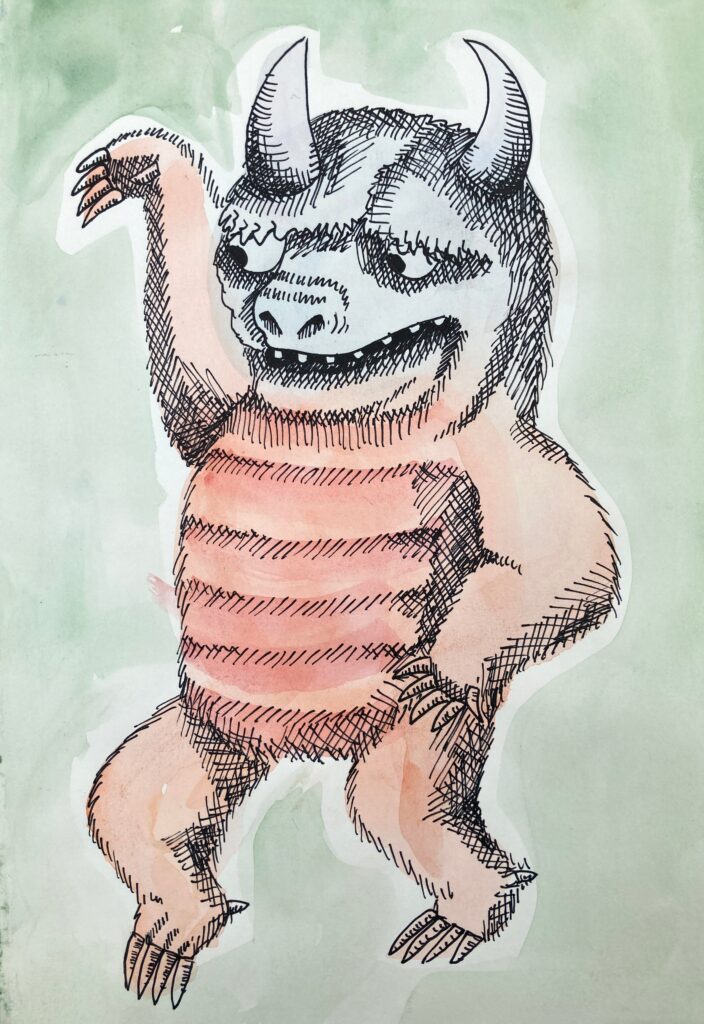
How much detail is up to the kids, though this is an artwork that can be returned to again and again. This project can be worked on in stages over a number of shorter sessions. I love that it can also be a very meditative process for kids – using watercolours is super calming, and the process of fine repeated detail is also relaxing and allows time for reflection.
Go you wild thing!
Tracy
Inspire your students to think and learn in new and exciting ways. Book a RAW Art workshop for your class today.
We will be in touch within 48 hours.